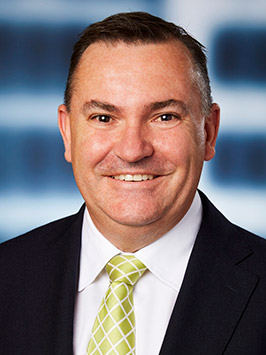People living in cars as debate rages around housing bill
As more Australians than ever sleep in tents and cars, the Chair of the National Housing Finance and Investment Corporation has declared Australian housing is facing its most crucial week in a generation.
Major daily newspapers are running front page stories of homeless people forced by a rental crisis into sleeping in tents, women around the country are living in cars thankful that winter has not yet arrived, and “Australian housing is facing probably its most crucial week in a generation.”
That was the picture painted by the Chair of the National Housing Finance and Investment Corporation (NHFIC), Adrian Harrington, on Tuesday.
“I opened a new housing development on the Central Coast (New South Wales) that was funded by NHFIC and it was for over-55 women and one of the women there that’s getting a brand new, beautiful apartment was in tears.
“I said ‘oh, you must be so happy’ and she replied ‘I'm so happy because I've been living in my car for six months and showering at surf clubs.’
There were another 175,000 people like her in Australia, Mr Harrington said.
Addressing the Urban Development Institute of Australia (UDIA) National Congress 2023 in Perth, Mr Harrington said the magnitude of this week rested on the outcome of the stalemate between The Greens and Labor over the passage of the Albanese government’s proposed $10 billion Housing Australia Future Fund (HAFF)

Adrian Harrington, Chair of the National Housing Finance and Investment Corporation
He said the impasse had to end by Thursday night (30 March) or risk the bill being delayed until the next sitting week, which coincides with the federal budget in May.
Greens Leader Adam Bandt is pushing the government to incorporate renters in Labor’s Housing Australia Future Fund Bill, and has the support of other independents in parliament.
The Government is trying to deliver on its election promise to fund the construction of 30,000 social and affordable homes over five years.
“If people think that it’s a great idea to say that they support more investment in social housing but not back a $10bn fund that will build more social and affordable housing, then good luck having that argument,” Mr Albanese said, showing little sign that agreement was near.
But Mr Harrington said that even if or when the bill is passed the three tiers of government needed to go further, in collaboration with institutional investors, Community Housing Providers (CHPs) and developers to address an inevitable shortfall in social and affordable housing.
“There is a housing crisis that isn’t going away,” he said.
“Latest figures suggest there will be 1.7 million households in housing need by 2025 – a huge number – and a predicted unmet need of 730,000 dwellings between 2016 and 2036.”
In February this year, the Government introduced the HAFF in the hope it would soon would build 20,000 social housing properties, with 4,000 of those to be allocated for women and children fleeing domestic violence, and for older women on low incomes at risk of homelessness. Another 10,000 affordable housing properties would be made available for frontline workers.
With 175,000 people on waiting lists for social housing in Australia, Mr Harrington said the situation remained dire even with the new supply brought on by the HAFF, citing a range of variables to support his claim.
“Lowest income households in ten years have risen from 43 to 47 per cent of the private rental market, the rate of older people experiencing homelessness is increasing, rents are soaring (up 13.7 per cent for units, 8.7 per cent for houses in 12 months), more than a fifth of homeless people are indigenous, and supply constraints are making things more challenging.”
Solving the housing crisis
More access to land over the next five years and greater collaboration between private and public sector stakeholders were at the core of resolving the housing crisis, according to Mr Harrington.
He pointed out that NFHIC would be involved in 150 projects a year for the next five years, and that entailed an enormous volume of land, planning, design and administration to ensure the industry had the capability to deliver.
NHFIC is a corporate Commonwealth entity with the purpose of improving housing outcomes for Australia.
Attracting investment from the superannuation funds would go a long way to helping the financial viability of these projects but at the moment the scale of projects does not encourage their participation.
“The big super funds are under a lot of pressure from the government to participate in the scheme but they don’t want to be participating at the granular level, funding individual projects in regional Australia when they are managing $200 billion in funds.
“So we’re working with them and the government to try and work out ways that we can aggregate these projects so the institutions can come into a pool, and then we’d work with the developers and CHP sector to actually facilitate the allocation of that capital to bring projects to fruition,” he said.
At the moment, Australia’s super funds were more likely to invest overseas than in their own country.
“Some of our biggest super funds have got huge amounts of money invested in the US multi-family market and they’ve got virtually nothing invested in the Australian housing market, other than if they own Stockland, Mirvac and Lendlease and the like through their equities or REIT security funds.”

REITs, or real estate investment trusts, are companies that own or finance income-producing real estate across a range of property sectors and are usually listed on the stock exchange.
“So really, the participation of the superannuation funds is quite small in the Australian markets and we’ve got to get them in, but it’s that balancing act between their fiduciary obligations to their members versus the public or the social impact that they get from investing in the sector and there’s lots of discussions going on at the moment.”
The NHFIC’s role in addressing the housing crisis involves providing long-term and low-cost finance, and capability building assistance, to registered CHPs to support the provision of more social and affordable housing. It lends, invests and provides grants to help finance the critical infrastructure needed to unlock and accelerate new housing supply.
NHFIC also administers the Home Guarantee Scheme on behalf of the Australian Government, supporting eligible home buyers purchase a home sooner, and undertakes independent research into housing supply, demand and affordability in Australia.
The Federal Government last week increased funding that will assist homelessness services through the National Housing and Homelessness Agreement in 2023-24.




















